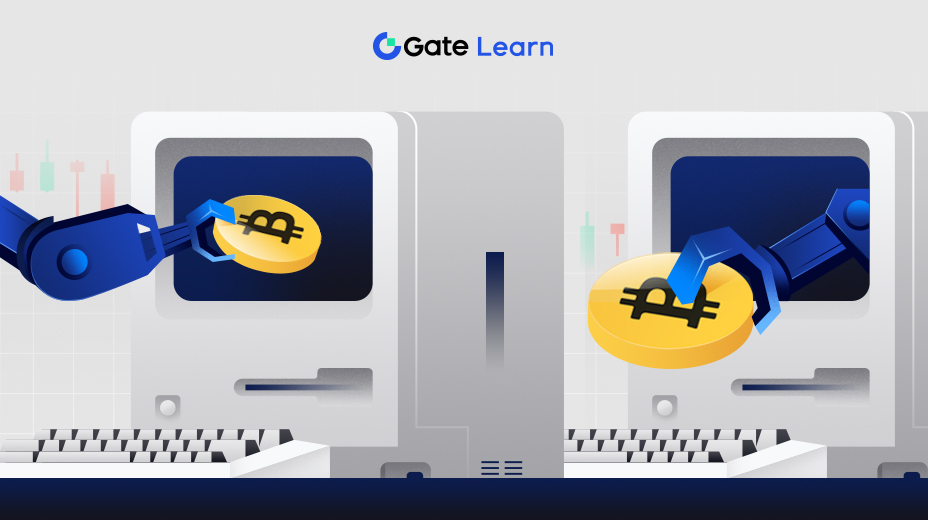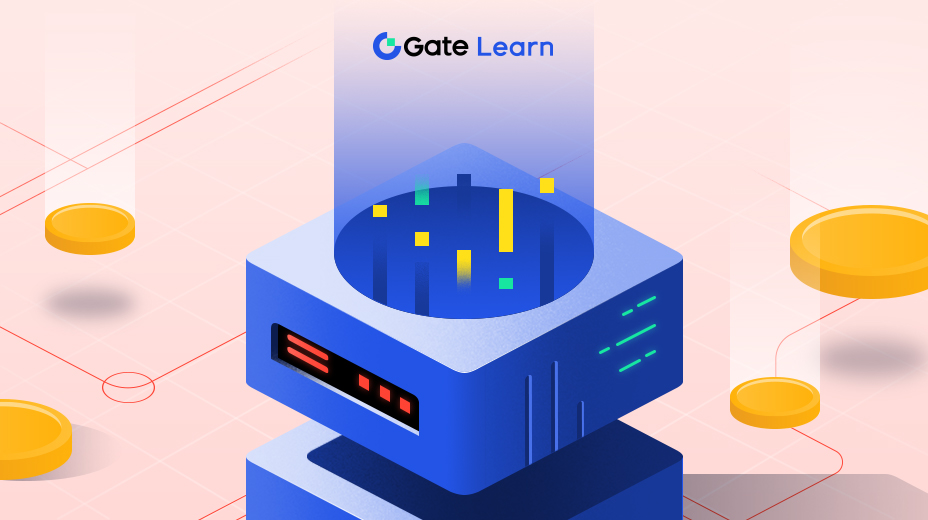Phần cứng và phần mềm khai thác
Khai thác yêu cầu các công cụ phần cứng và phần mềm chuyên dụng và có nhiều loại phần cứng khai thác khác nhau có sẵn trên thị trường, bao gồm ASIC, GPU và CPU. Trong bài học này, chúng ta sẽ thảo luận về các loại phần cứng khai thác khác nhau, tính năng và khả năng hoạt động của chúng. Chúng tôi cũng sẽ kiểm tra các công cụ phần mềm và máy tính khai thác khác nhau hỗ trợ người khai thác tối ưu hóa hoạt động khai thác của họ.
Các loại phần cứng khai thác (ASIC, GPU, CPU)
Để xác thực các giao dịch và thêm chúng vào chuỗi khối, việc khai thác tiền điện tử bắt buộc phải sử dụng phần cứng chuyên dụng. ASIC, GPU và CPU là ba loại phần cứng khai thác chính. Trong một số trường hợp, phần cứng FPGA (Field-Programmable Gate Array) cũng được sử dụng.
ASIC (Mạch tích hợp dành riêng cho ứng dụng)

ASIC (Mạch tích hợp dành riêng cho ứng dụng) được xây dựng đặc biệt để khai thác tiền điện tử và cung cấp hiệu suất và hiệu quả vượt trội. Chúng có thể hoàn thành một nhiệm vụ duy nhất với tốc độ nhanh và được tối ưu hóa cho thuật toán khai thác được sử dụng bởi một loại tiền điện tử nhất định. ASIC rất tốn kém để sản xuất và mua, nhưng chúng là loại phần cứng khai thác hiệu quả nhất hiện có. Ví dụ: khai thác Bitcoin bắt buộc phải sử dụng ASIC được thiết kế dành riêng cho băm SHA-256.
GPU (Bộ xử lý đồ họa)

Do tính linh hoạt và chi phí thấp, GPU (Bộ xử lý đồ họa) rất phổ biến trong giới khai thác tiền điện tử. Chúng không dành riêng cho khai thác, nhưng chúng có thể xử lý các tính toán phức tạp cần thiết để khai thác. GPU thường được sử dụng để khai thác tiền điện tử như Ethereum, sử dụng thuật toán khai thác Ethash.
CPU (Bộ xử lý trung tâm)

CPU (Bộ xử lý trung tâm) là loại phần cứng khai thác kém mạnh mẽ nhất và được sử dụng khá ít trong khai thác tiền điện tử. Chúng là loại phần cứng thích ứng nhất và có thể xử lý nhiều loại công việc. Thật không may, do khả năng xử lý kém, chúng không phù hợp để khai thác phần lớn tiền điện tử.
FPGA (Mảng cổng có thể lập trình trường)

FPGA (Field-Programmable Gate Arrays) là các thiết bị phần cứng có thể lập trình được có thể được lập trình để thực hiện các chức năng nhất định. FPGA dễ thích ứng hơn ASIC vì chúng có thể được lập trình lại để hỗ trợ các thuật toán khai thác khác nhau. Chúng đắt hơn GPU nhưng rẻ hơn ASIC. FPGA thường được sử dụng trong khai thác tiền điện tử, chẳng hạn như Verge và Digibyte.
Phần mềm và công cụ khai thác
Phần mềm khai thác kiểm soát quá trình khai thác và kết nối phần cứng khai thác với mạng chuỗi khối và có nhiều dạng khác nhau, bao gồm:
- CGMiner: Một phần mềm khai thác phổ biến có thể khai thác bằng ASIC, GPU và CPU.
- BFGMiner: Mô-đun phần mềm khai thác hỗ trợ khai thác ASIC và FPGA.
- EasyMiner: Phần mềm khai thác dựa trên giao diện người dùng đồ họa hỗ trợ khai thác cả CPU và GPU.
- Công cụ khai thác tuyệt vời: Tốt nhất để quản lý phần cứng tập trung.
- Công cụ khai thác kép của Claymore: Một phần mềm khai thác phổ biến cho phép khai thác kép cho Ethash và các loại tiền khác.
- Ecos: Tốt nhất để khai thác tiền điện tử dựa trên đám mây.
Ngoài phần mềm khai thác, còn có các công cụ khác có thể hỗ trợ người khai thác tối ưu hóa quy trình khai thác của họ, chẳng hạn như:
Máy tính khai thác: Chúng được sử dụng để đánh giá doanh thu có thể có và ước tính chi phí khai thác.
Nhóm khai thác là nhóm những người khai thác tập hợp các tài nguyên xử lý của họ để tối đa hóa cơ hội giải quyết một khối và kiếm phần thưởng khai thác.
Ví phần cứng: Chúng được sử dụng để lưu trữ bitcoin khai thác một cách an toàn trong ví ngoại tuyến.
Các bước để thiết lập một giàn khai thác
Chọn phần cứng, lắp ráp các thành phần, cài đặt phần mềm và định cấu hình hệ thống là tất cả các bước trong quy trình thiết lập giàn khai thác. Dưới đây là tóm tắt nhanh từng bước:
Trong khi chọn phần cứng cho giàn khai thác, điều quan trọng là phải kiểm tra các yếu tố như tốc độ băm, mức tiêu thụ điện năng và chi phí. Thiết bị khai thác, có thể là ASIC, GPU, FPGA hoặc CPU, là thành phần quan trọng nhất. Bộ cấp nguồn (PSU), bo mạch chủ, bộ nhớ (RAM) và bộ lưu trữ nằm trong số các thành phần vật lý thiết yếu (SSD hoặc HDD).
Lắp ráp các thành phần: Sau khi chọn phần cứng, bước tiếp theo là ghép các mảnh lại với nhau để tạo thành một giàn khai thác hoạt động. Gắn bo mạch chủ, kết nối bộ cấp nguồn, cài đặt thiết bị khai thác và kết nối các thành phần cần thiết khác như RAM và bộ lưu trữ đều là một phần của quy trình lắp ráp. Để tránh hư hỏng hoặc mất ổn định trong khi vận hành, hãy đảm bảo rằng tất cả các bộ phận được lắp đúng vị trí và được kết nối chắc chắn.
Cài đặt phần mềm: Sau khi phần cứng đã được lắp ráp, phần mềm phải được cài đặt. Điều này bao gồm phần mềm khai thác giao tiếp với thiết bị khai thác và nhóm, cũng như hệ điều hành (OS), trình điều khiển và các tiện ích khác. Phần mềm khai thác là duy nhất cho mỗi thiết bị khai thác và thường có sẵn trên trang web của nhà sản xuất.
Sau khi cài đặt chương trình, bước tiếp theo là thiết lập cài đặt hệ thống, bao gồm ép xung GPU, định cấu hình nhóm khai thác và sửa đổi các yếu tố khác như tốc độ quạt và ngưỡng nhiệt độ. Điều quan trọng là phải thường xuyên kiểm tra hiệu suất hệ thống và thực hiện bất kỳ điều chỉnh cần thiết nào để đảm bảo hiệu suất và độ ổn định tối ưu.
Cuối cùng, điều quan trọng là phải bảo trì giàn khai thác một cách thường xuyên, bao gồm làm sạch các bộ phận và thay thế bất kỳ thiết bị bị hỏng nào. Bụi và mảnh vụn có thể tích tụ trên các bộ phận theo thời gian, gây ra hiện tượng quá nhiệt và hoạt động kém. Bảo trì đúng cách có thể giúp kéo dài tuổi thọ và hiệu quả của thiết bị khai thác.





